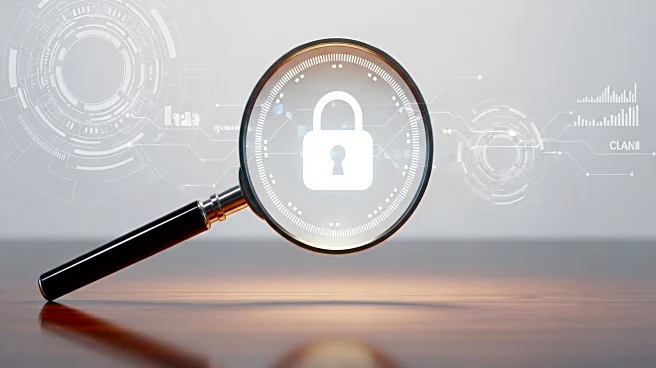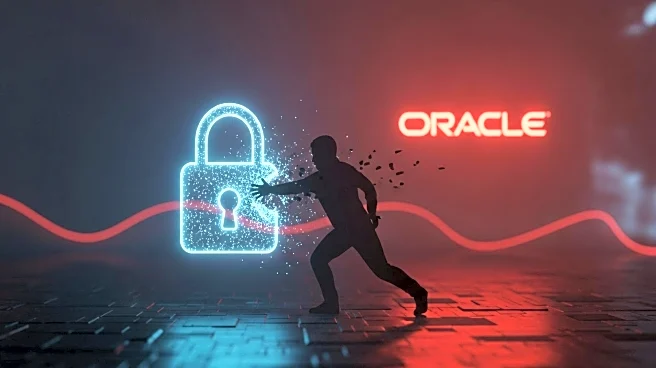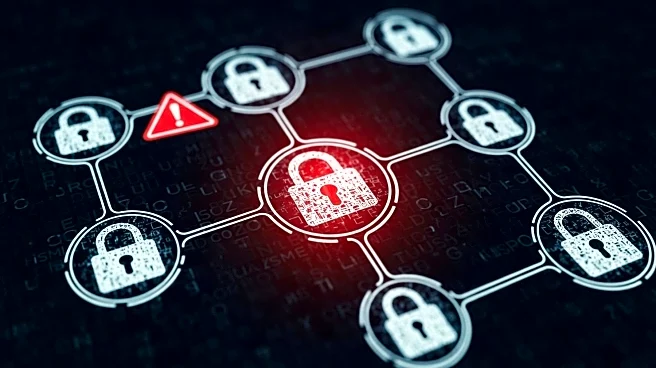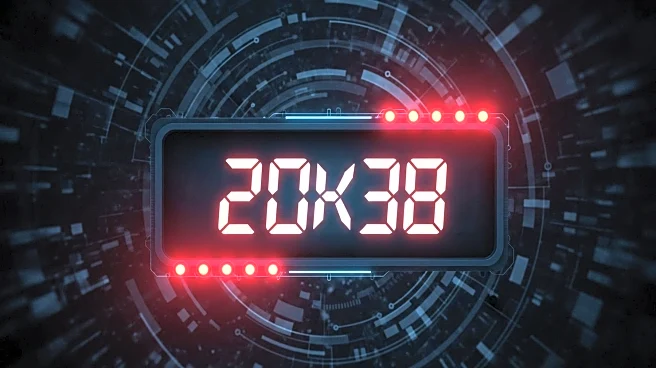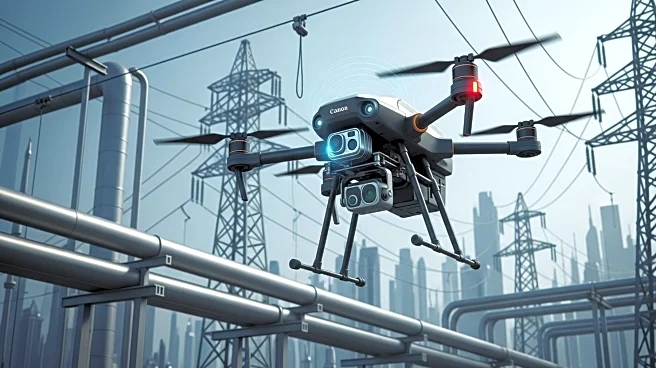What's Happening?
The RondoDox botnet has emerged as a significant cybersecurity threat, employing a 'shotgun' approach to compromise various network devices. According to Trend Micro, the botnet targets over 50 vulnerabilities across routers, servers, cameras, and other network products. Initially identified in mid-2025, RondoDox exploits CVE-2023-1389, a command injection flaw in TP-Link Archer AX21 routers, and has expanded its scope to include vulnerabilities in TBK DVRs and Four-Faith routers. The botnet targets devices from more than 30 vendors, with 56 vulnerabilities identified, including 18 without CVE identifiers. The U.S. cybersecurity agency CISA has added some of these vulnerabilities to its Known Exploited Vulnerabilities list, highlighting the urgent need for patching. RondoDox's activities have surged by 230% since mid-2025, exploiting weak credentials and unsanitized inputs. Infected devices are used for cryptocurrency mining, DDoS attacks, and hacking into enterprise networks.
Why It's Important?
The rise of the RondoDox botnet poses a significant threat to network security, particularly for organizations with internet-exposed infrastructure lacking robust security measures. The botnet's ability to exploit a wide range of vulnerabilities across multiple vendors underscores the persistent risks in cybersecurity. The use of infected devices for malicious activities such as DDoS attacks and cryptocurrency mining can lead to substantial financial losses and operational disruptions for businesses. The rapid rotation of infrastructure by RondoDox operators to evade detection further complicates efforts to mitigate the threat. As cybersecurity threats evolve, organizations must prioritize patching and strengthening security controls to protect their networks from such sophisticated attacks.
What's Next?
Organizations are expected to enhance their cybersecurity measures in response to the growing threat posed by the RondoDox botnet. This includes implementing robust patch management practices to address vulnerabilities and improve network security. Cybersecurity firms and agencies may increase efforts to track and disrupt the botnet's operations, potentially leading to new security advisories and updates. The ongoing development of security technologies and strategies will be crucial in countering the botnet's activities and minimizing its impact on affected industries.
Beyond the Headlines
The emergence of the RondoDox botnet highlights the ethical and legal challenges in cybersecurity, particularly concerning the responsibility of vendors to address vulnerabilities in their products. The widespread exploitation of network devices raises questions about the adequacy of current security standards and the need for more stringent regulations. Additionally, the botnet's use of infected devices for illicit activities underscores the importance of international cooperation in combating cybercrime and protecting digital infrastructure.


